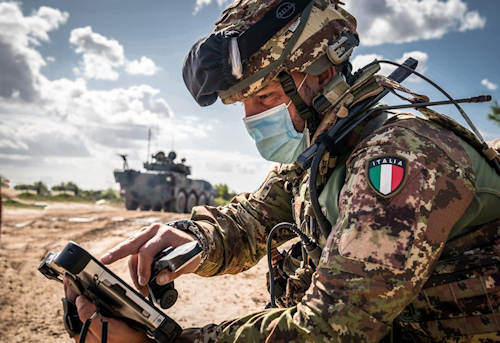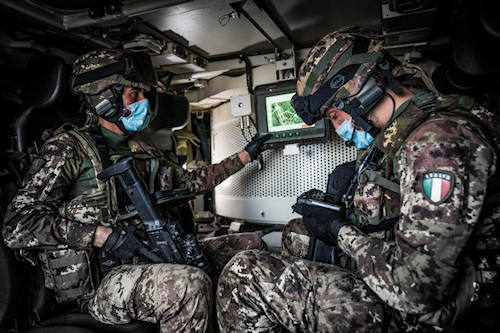Exploration, sometimes in common parlance understood as reconnaissance, has always represented an activity - which we could indicate as "preliminary" - aimed at ascertaining "in the field" the existence of elements of the situation detected during the study phase of a specific context and / or to acquire new ones, in order to allow to the decision maker to make the best use (in terms of "cost / effectiveness") of the resources available to achieve a specific goal.
At one time, in the battlefields the military formations responsible for carrying out this task were called "avant-gardes", intended to operate on the front of the so-called "big", with the aim of providing the command line, in the shortest possible time, with information on the entity, location, nature and attitude (EDNA) of the enemy, so as to be able to confirm the operational planning drawn up "at the table" or, having ascertained the deviation, make the necessary "corrections" to the maneuver (battle space management).
In the Italian Army, the units Line cavalry, are units that have historically carried out and still carry out as a matter of priorityTerrestrial Tactical Exploration (ETT) in favor of large elementary (brigades) and complex (army corps) units.
ETT is essentially conducted in two ways, that "by stealth" (hidden) and / or "by fire" (combat), fulfilling the function of discovering the environment (including anthropogenic factors) and as a "holistic protection supplement "; more specifically, it carries out the following activities:

- surveillance and research ("cognitive dominance"), in a space (also in a CBRN environment) about 10 - 25 sq km. from the friendly line;
- identification and determination of objectives and support for the "targeting" cycle;
- engagement, only if necessary and for a limited time.
Today, the high dynamism of the international scenario and the complex mutability of the threats require the terrestrial military instrument to establish a process of continuous adaptation to guarantee an adequate operational response. Among the elements of this process emerges the need / necessity to make the ability to "engage" the enemy with timing and precision more efficient (also in the context of operations joint and / or combined) and, therefore, to "discover" his "posture" with equal timing and accuracy.
Currently, most SRI resources (Intelligence, Surveillance and Reconnaisance) terrestrial are simply collectors of raw data, which require, for the purposes of understanding and initiating the decision-making process, evaluation times that do not always correspond to the “operational timing” (the so-called “rhythm of the battle”). It follows that the exploration units in order to respond to the new mandatory challenges must necessarily be able to have light / medium, armed and protected vehicles with better performance, be equipped with a wide range of sensors (eg: mini UAVs, etc ...) capable of providing "In real time" to a high-level decision-making system (Fusion center) a variety of information (for example: detection, classification of the probabilistic target, geolocation, monitored trajectory, classification of probabilistic behavior, etc ...) that allow to initiate the decision-making process in an effective and timely manner, which may deny the opponent's ability to take even surprise actions and exercise his fighting power.
 With regard to sensors, I would like to finally focus on the use of commercial drones used in a very widespread way in the current conflict in Ukraine. News sources reported the use of small commercial drones piloted by Ukrainians without specific training and transported in containers the size of a suitcase, to monitor the movements of Russian troops and ambush them.
With regard to sensors, I would like to finally focus on the use of commercial drones used in a very widespread way in the current conflict in Ukraine. News sources reported the use of small commercial drones piloted by Ukrainians without specific training and transported in containers the size of a suitcase, to monitor the movements of Russian troops and ambush them.
Valerii Iakovenko, founder of the Ukrainian drone company "DroneUa" reported in a recent interview that "Drones have changed warfare, they are used for intelligence operations, to collect and transfer data on the movements or positions of enemy troops, to correct artillery fire, for counter-sabotage actions and, of course, search and rescue. ... the Ukrainian forces are employing more than six thousand drones for reconnaissance ... the devices are able to connect to Starlink, Elon Musk's satellite system, to upload the videos ... ".
The extensive use of these sensors, if confirmed, represents an unprecedented fact that requires a reflection on the use of these types of commercial devices which, in the face of a low cost, would provide a high yield for the purposes of superiority in the field of information, or for understand better and above all before the opponent what happens in the area of operations, and thus acquire an "advantage", sometimes decisive, in combat.
gen. d. (aux.) Carmelo Cutropia
Photo: Italian Army












